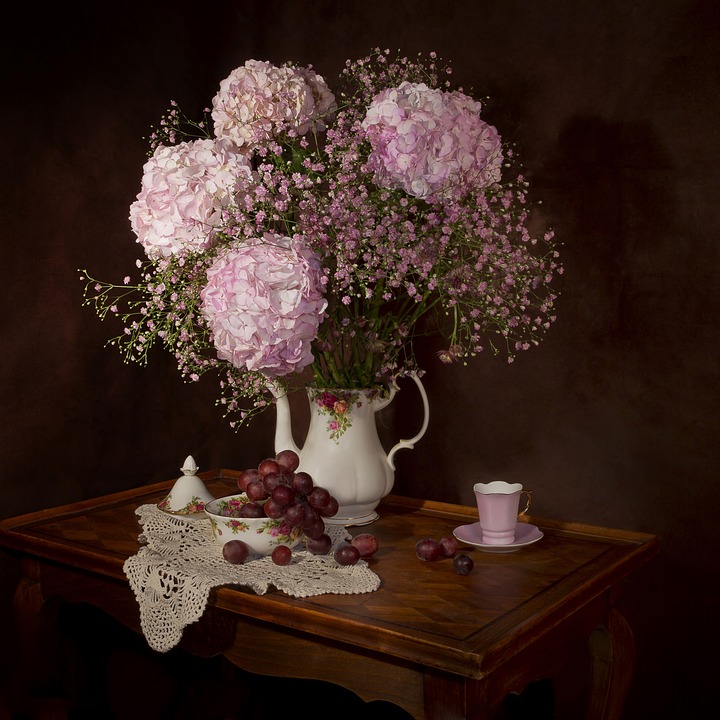
Taking care of Hydrangeas
Hydrangeas are truly unique. They appear large in size but are, in fact, a cluster of smaller flowers on a single stem. They bloom in the warmer months of spring and summer. They are also popular for many types of arrangements including weddings, anniversaries, and funerals. If you want to plant Hydrangeas in your garden, it’s important to provide them with the proper care so that they flourish.
The first thing to remember is that there are different types of Hydrangeas. The French Hydrangea is a popular choice due to its beautiful blue colour. They are also referred to as Bigleaf Hydrangeas. Smooth Hydrangeas are cream in colour and they tend to prefer acidic soil. Oakleaf Hydrangeas produce white flowers and they do well in dryer climates. Finally the Pinacle Hydrangea has white blooms that turn red or pink in the autumn months. They are very versatile and can adapt to full sun. They attract butterflies and they are at their prime during the autumn season.
Just like any other plant, it’s important to choose the right location for your Hydrangeas. They need lots of room for growth since they can grow quite large. They are best planted in the early spring or autumn months. When you have selected the perfect spot, you will need to dig a hole that is deep enough to cater to the roots. It should be about two or three times as wide as the plant. Put the plant in the hole and fill half with soil. Water the plant until the soil is moist. Fill with the rest of the soil and water again thoroughly.. If you plan on planting several plants, you should allow three to ten feet in between.
As for care, there are a few things you will need to be aware of before choosing to plant Hydrangeas. For the most part, Hydrangeas prefer full sun in the morning but shade in the afternoon. This can vary depending on the type of Hydrangea so make sure that you take the time to research the plant before you make your selection. Hydro is Greek for water and it’s easy to understand from its name that this plant likes a lot of water. They should be watered about three times a week but the soil also needs to offer proper drainage. You don’t want the water to become too wet or soggy. Rich and moist soil is ideal and you can help keep the soil just right by adding much under the hydrangeas before the warmer months. They love water but they don’t enjoy having their roots swimming in it. The colour of the blooms largely depend on the pH of the soil. An acidic pH renders blue flowers while an alkaline soil results in pink flowers. These plants are not prone to disease but it doesn’t hurt to keep an eye out for aphids, leaf tiers, leaf spot, and red spider mites.
As for pruning, it’s best to keep the type of plant in mind when setting a pruning schedule. Oakleaf and French Hydrangeas should be pruned once the flowers fade in the summer months. The oldest stems should be cut down to the base. Smooth and Pinacle Hydrangeas should be pruned before the flower buds form. This is usually best done late in the winter months while the plant is dormant. Dead branches should also be pruned.
The right care will ensure that your Hydrangea will grow well and produce amazing blooms year after year. If you plan on sending a Hydrangea plant as a gift, make sure that you include care instructions too.
